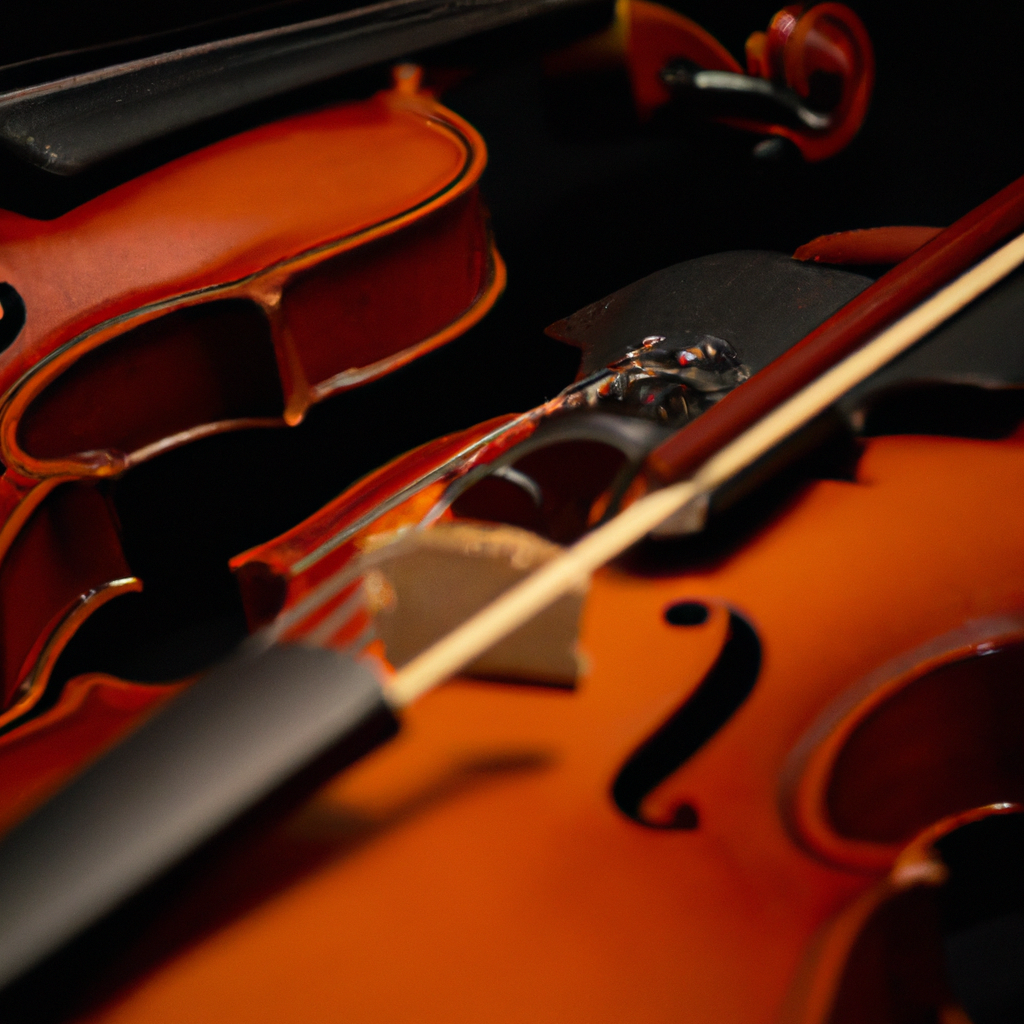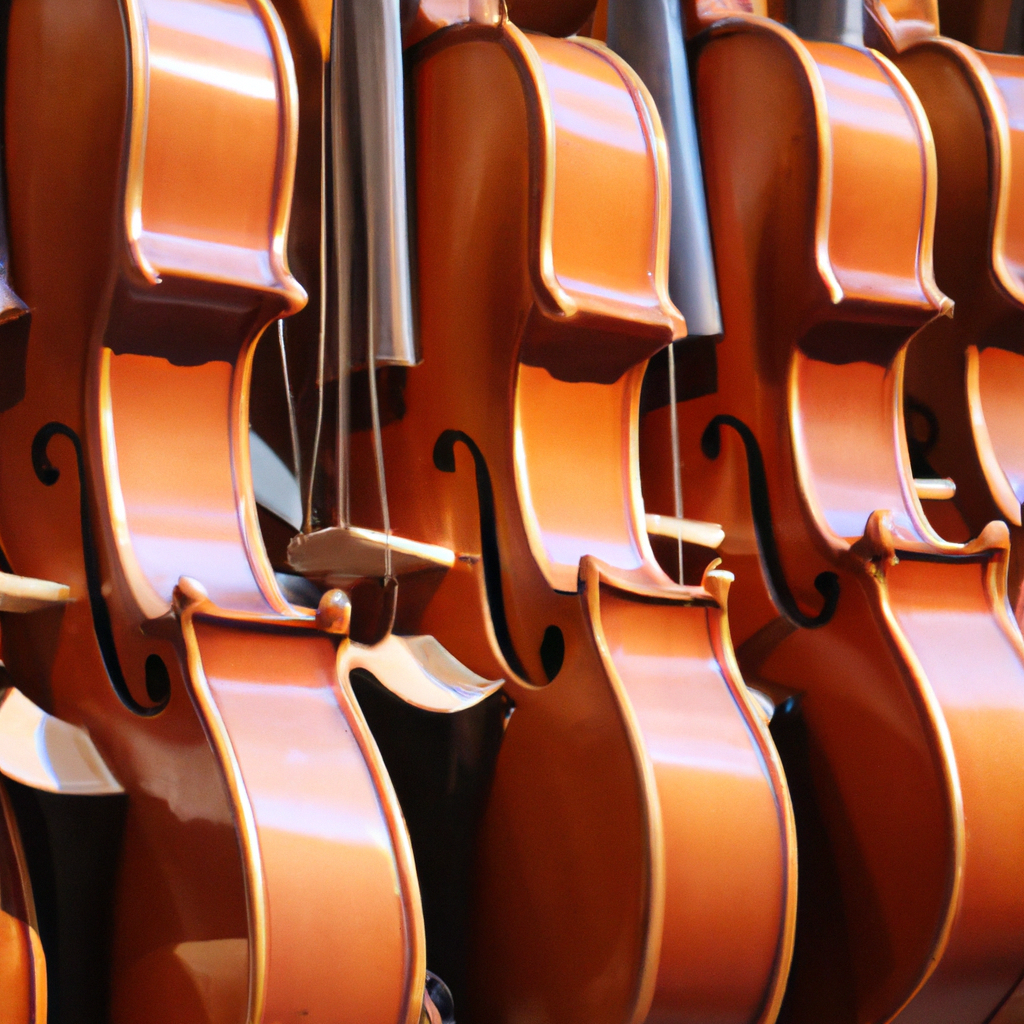
Learning to play the violin can be a rewarding and fulfilling journey. However, for beginners, it can be overwhelming and challenging without proper guidance. That's where a comprehensive beginners violin guide comes in. This guide is designed to provide step-by-step instructions, tips, and recommendations to help beginners embark on their violin learning journey with confidence and ease.

Before diving into the world of violin playing, it's important to choose the right instrument. There are different types and sizes of violins available for beginners. It's essential to select one that suits your needs and preferences.

When choosing a violin, consider factors such as size, material, and budget. For beginners, it's recommended to start with a violin made of solid wood, as it produces better sound quality. It's also important to choose the right size violin that matches your body measurements.

Additionally, it's advisable to try the instrument before purchasing it, if possible. This will allow you to assess the sound, playability, and comfort of the violin. Seeking guidance from a violin teacher or an experienced player can also be helpful in selecting the right instrument.

Before getting started with playing the violin, it's important to familiarize yourself with its different parts and their functions. Understanding the anatomy of the instrument will contribute to your overall playing experience.
A violin consists of several key components, including the body, neck, fingerboard, pegs, tailpiece, bridge, strings, and bow. Each part plays a crucial role in producing sound and contributing to the playability of the instrument.
For example, the soundpost, located inside the body of the violin, enhances the resonance and tone. The bridge supports the strings and transmits their vibrations to the body, while the fingerboard provides a surface for pressing the strings to produce different pitches. Familiarizing yourself with these parts will help you understand how they work together to create beautiful music.
Once you have chosen the right violin, it's time to set it up properly. Setting up your violin correctly is crucial for optimal sound quality and playability.
Start by tuning the strings using a tuner or a pitch reference. Properly tuned strings will ensure that you are practicing and playing in the correct pitch. Adjusting the bridge is another important step in setting up your violin. The bridge needs to be properly aligned and positioned to maintain the correct string height and tension.
Moreover, it's important to regularly clean and maintain your violin. Wipe the instrument with a soft cloth after each practice session to remove rosin buildup. Additionally, store your violin in a protective case to prevent damage and maintain its condition.
Correct posture and positioning are essential for playing the violin comfortably and effectively. Holding the violin and bow correctly will allow you to produce a good tone and execute various techniques with ease.
When holding the violin, place the chin rest against your chin and rest the shoulder rest on your shoulder. Hold the neck of the violin with your left hand, keeping your fingers curved and relaxed. The scroll of the violin should be slightly tilted towards you.
When it comes to holding the bow, hold it with your right hand using a relaxed grip. The thumb should rest on the side of the frog, while the other fingers gently wrap around the bow. Maintaining a balanced and relaxed hold will enable you to produce a smooth and controlled sound.
It's important to practice proper hand and arm positions to develop muscle memory and avoid tension or strain while playing.
Learning the fundamental techniques and strokes used in violin playing is crucial for building a strong foundation. By mastering these techniques, you will be able to play with more control, precision, and expression.
Some of the basic techniques include bowing techniques such as the down bow and the up bow, as well as the staccato, legato, and spiccato strokes. It's important to practice these techniques slowly and gradually increase the speed and complexity.
Exercises and practice tips can help you develop these techniques. For example, practicing scales, arpeggios, and etudes will improve finger dexterity, intonation, and overall technique. Additionally, incorporating specific exercises to strengthen the bow arm and develop bow control will enhance your playing.
Reading sheet music is an essential skill for violinists. Understanding musical notation and basic music theory concepts will enable you to interpret and perform pieces accurately.
Start by learning the musical alphabet and note names on the staff. Familiarize yourself with key signatures, time signatures, and other symbols commonly found in sheet music. Practice sight-reading exercises to improve your ability to read and play music fluently.
Understanding basic theory concepts like intervals, scales, and chords will also deepen your understanding of music and aid in memorization and interpretation.
Practicing violin efficiently and effectively is key to making progress and developing your skills. A well-structured practice session will help you focus on specific goals and improve in a systematic manner.
Start by setting specific practice goals for each session. Break down pieces or exercises into smaller sections and work on them individually. Practice slowly and gradually increase the speed as you become more comfortable and confident.
Additionally, it's important to develop good practice habits, such as regular practice schedule, warm-up exercises, and mental focus. Consistency and perseverance are key to mastering the violin.
As a beginner, it's common to make mistakes while learning the violin. Identifying these mistakes and finding solutions will help you overcome challenges and improve your playing.
Some common mistakes include incorrect intonation, improper bowing technique, and inconsistent finger placement. To address these issues, focus on developing a good ear for pitch, practicing proper bowing exercises, and paying attention to finger placement accuracy.
Seeking guidance from a qualified violin teacher or experienced players can also help you troubleshoot and correct any technical issues you may encounter.
Once you have mastered the basic techniques and gained confidence in playing the violin, it's time to expand your repertoire. Learning and practicing different pieces will further enhance your skills and musicality.
As a beginner, it's advisable to start with beginner-friendly pieces that are not too challenging. Gradually increase the difficulty level of the repertoire as you progress. Playing a variety of music genres, such as classical, folk, or pop, will allow you to explore different styles and develop versatility.
While learning the violin on your own is possible, having a qualified violin teacher can greatly accelerate your progress and ensure proper technique and guidance.
A violin teacher can offer personalized instruction, identify and correct mistakes, and provide guidance tailored to your individual needs and goals. They can also introduce you to a wider range of repertoire and help you navigate through the challenges of learning the violin.
When looking for a violin teacher, consider their qualifications, teaching experience, and teaching style. It's important to find someone who can effectively communicate and connect with you as a student.
1. How long does it take to learn the violin as a beginner?
Learning the violin is a lifelong journey, and the time it takes to become proficient varies from person to person. However, with consistent practice and dedication, beginners can expect to see progress within a few months to a year.
2. Is it necessary to learn music theory to play the violin?
While it's not absolutely necessary, having a basic understanding of music theory can greatly enhance your violin playing. It will help you read and interpret sheet music, understand musical concepts, and communicate effectively with other musicians.
3. How often should I practice the violin as a beginner?
Consistency is key when learning the violin. It's recommended to practice at least 30 minutes to an hour a day as a beginner. However, it's important to prioritize quality over quantity. It's better to have focused and productive practice sessions rather than long hours of mindless repetition.
The comprehensive beginners violin guide provides a solid foundation for anyone starting their violin learning journey. By following the steps outlined in this guide, beginners can develop proper technique, understand music theory, and practice effectively.
Remember, learning the violin is a process that requires patience, persistence, and passion. Embrace the challenges, seek guidance when needed, and enjoy the beautiful journey of playing the violin.
Start your violin learning journey today with the help of this comprehensive beginners violin guide, and unlock the potential to create beautiful music with this versatile instrument.